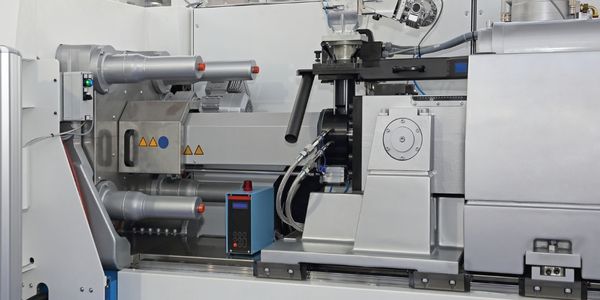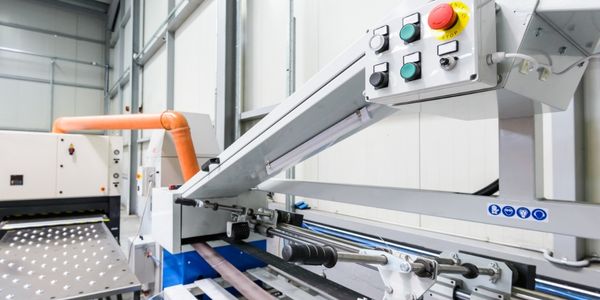Demtech Services’ growth outpaced the capabilities of its accounting software, leading to the selection of Acumatica to improve data management and enhance customer service.

Customer Company Size
SME
Region
- America
Country
- United States
Product
- Acumatica Cloud ERP
- Acumatica Financial
- Acumatica Distribution
- Acumatica CRM
- Fusion Warehouse Management System
Tech Stack
- Cloud Computing
- ERP Systems
- Barcode Scanning
Implementation Scale
- Enterprise-wide Deployment
Impact Metrics
- Productivity Improvements
- Customer Satisfaction
Technology Category
- Platform as a Service (PaaS) - Data Management Platforms
- Platform as a Service (PaaS) - Connectivity Platforms
Applicable Functions
- Discrete Manufacturing
Use Cases
- Manufacturing System Automation
- Inventory Management
Services
- Cloud Planning, Design & Implementation Services
- System Integration
About The Customer
Demtech Services is a company that specializes in manufacturing machines that weld together sheets of heavy plastic lining for landfills and other operations that require water- and vapor-proof ground protection. The company was established in 1999 and has 45 employees. It has offices in California and Ohio, and mobile units that provide sales and service to customers in the field. Demtech also has distributors in Mexico, South America, the United Kingdom, Northern Africa, China, Southeast Asia, and Australia.
The Challenge
Demtech Services, a manufacturer of specialized plastic welding machines, was facing challenges due to the limitations of its accounting software, QuickBooks. As the company grew, it found that QuickBooks was unable to meet its needs, particularly in terms of financial controls and accountability. The software allowed changes to be made arbitrarily, without any financial controls or accountability, which was not suitable for a growing company. Additionally, as Demtech expanded its offices and added staff in the field, it found that QuickBooks was unable to meet its needs in terms of managing multiple warehouses.
The Solution
Demtech Services decided to switch to an ERP system and selected Acumatica Cloud ERP. The company considered a SaaS deployment, but ultimately chose a private cloud on-premise deployment because they wanted to control their own server, yet still realize the benefits of a web-based ERP solution. In addition to the Acumatica Financial, Distribution and CRM suites, Demtech also implemented the Fusion Warehouse Management System with wireless barcode scanners. The company plans to add a manufacturing component in the future.
Operational Impact

Case Study missing?
Start adding your own!
Register with your work email and create a new case study profile for your business.
Related Case Studies.

Case Study
Plastic Spoons Case study: Injection Moulding
In order to meet customer expectations by supplying a wide variety of packaging units, from 36 to 1000 spoons per package, a new production and packaging line needed to be built. DeSter wanted to achieve higher production capacity, lower cycle time and a high degree of operator friendliness with this new production line.

Case Study
Robot Saves Money and Time for US Custom Molding Company
Injection Technology (Itech) is a custom molder for a variety of clients that require precision plastic parts for such products as electric meter covers, dental appliance cases and spools. With 95 employees operating 23 molding machines in a 30,000 square foot plant, Itech wanted to reduce man hours and increase efficiency.

Case Study
Hospital Inventory Management
The hospital supply chain team is responsible for ensuring that the right medical supplies are readily available to clinicians when and where needed, and to do so in the most efficient manner possible. However, many of the systems and processes in use at the cancer center for supply chain management were not best suited to support these goals. Barcoding technology, a commonly used method for inventory management of medical supplies, is labor intensive, time consuming, does not provide real-time visibility into inventory levels and can be prone to error. Consequently, the lack of accurate and real-time visibility into inventory levels across multiple supply rooms in multiple hospital facilities creates additional inefficiency in the system causing over-ordering, hoarding, and wasted supplies. Other sources of waste and cost were also identified as candidates for improvement. Existing systems and processes did not provide adequate security for high-cost inventory within the hospital, which was another driver of cost. A lack of visibility into expiration dates for supplies resulted in supplies being wasted due to past expiry dates. Storage of supplies was also a key consideration given the location of the cancer center’s facilities in a dense urban setting, where space is always at a premium. In order to address the challenges outlined above, the hospital sought a solution that would provide real-time inventory information with high levels of accuracy, reduce the level of manual effort required and enable data driven decision making to ensure that the right supplies were readily available to clinicians in the right location at the right time.

Case Study
Fully Automated Visual Inspection System
Tofflon has developed a fully automatic machine that uses light to inspect vials, medicine bottles, or infusion containers for glass fragments, aluminum particles, rubber grains, hairs, fibers, or other contaminants. It also detects damaged containers with cracks or inclusions (microscopic imperfections), automatically removing faulty or contaminated products. In order to cover all production processes for freeze-dried pharmaceuticals, Tofflon needed to create an open, consistent, and module-based automation concept.

Case Study
SAP Leonardo Enabling Rocket Science
At times, ULA has as many as 15 different operating systems dedicated to overlapping processes, such as rocket design, testing, and launch. Multiple systems created unnecessary costs and unwanted confusion among workers at offices, factories, and launch sites in different location. In order to improve collaboration and transparency during vital activities that directly influence mission success, ULA wanted to improve data sharing and streamline manufacturing processes.







